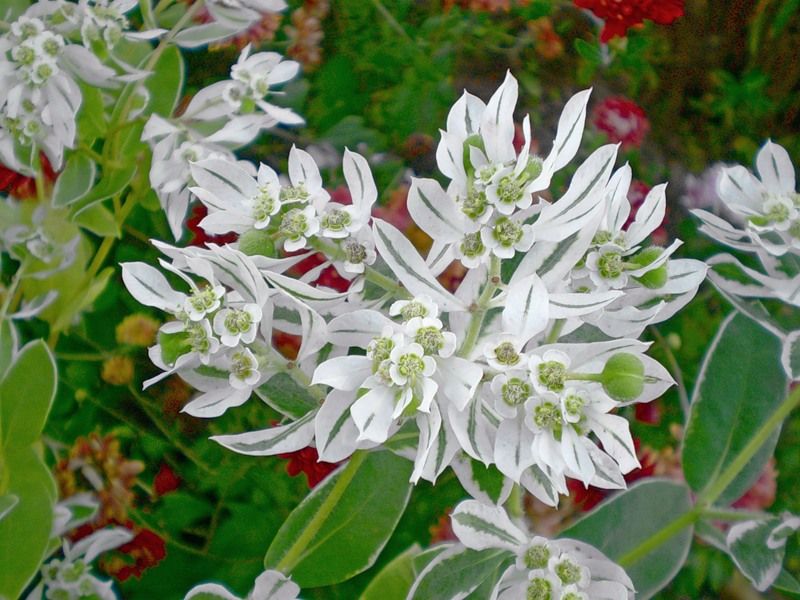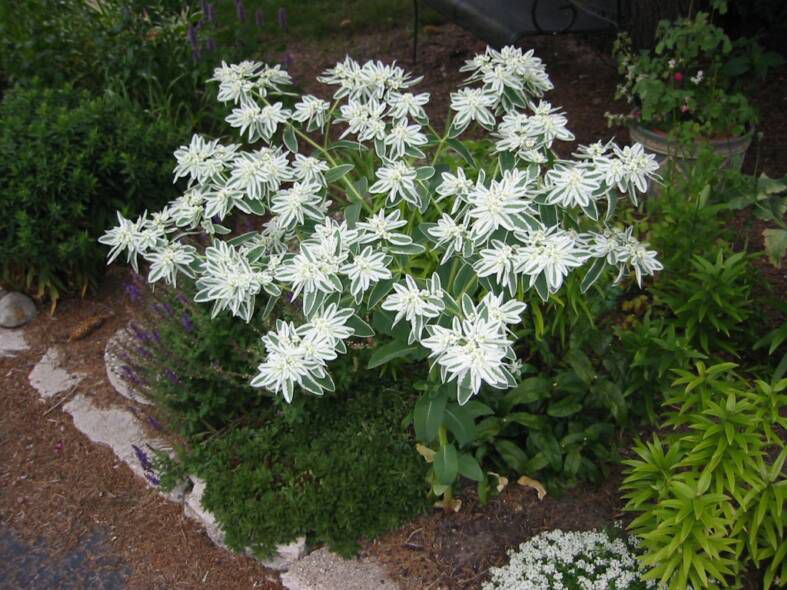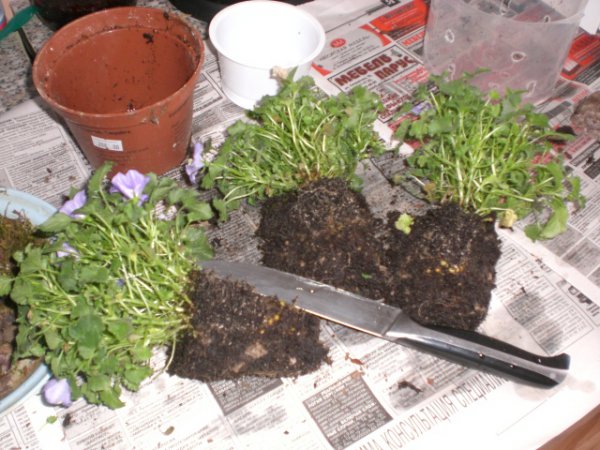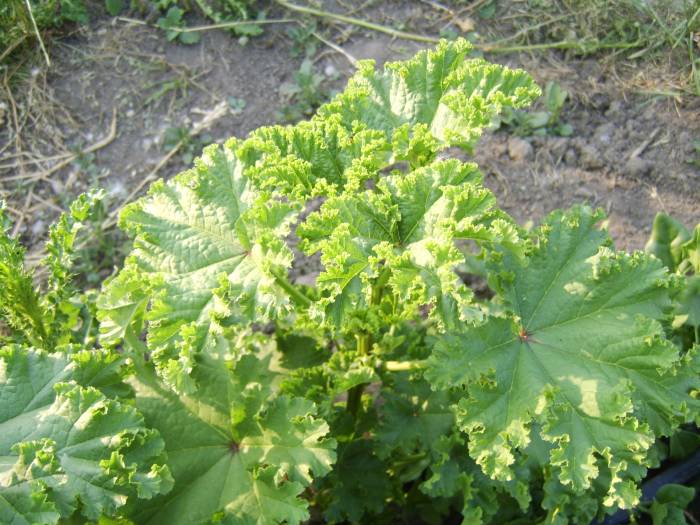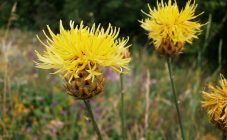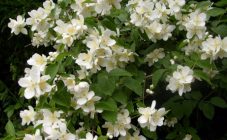Content:
Gardeners call several plants a bride: euphorbia fringed, musk mallow, viburnum Buldenezh. Each of them looks very impressive at the time of its flowering. The listed plants are worth considering in more detail.
Euphorbia edged
Another name - Euphorbia Marginata - is a real decoration of the garden. Euphorbia looks very solemn and elegant due to the pale green leaves with a white border. Due to these qualities, and also because the bush grows very quickly, it is popularly called the "rich bride".
Characteristics and conditions of detention
The bride is a perennial flower, but in fact in most regions of Russia this plant is cultivated as an annual. In winter, the entire aboveground part freezes out. But already in the spring, a whole scattering of young seedlings from seeds appears, sprinkled with milkweed on the ground.
The height of the bush, under favorable conditions, reaches 90 cm. Small flowers are located at the very top of the shoots. But they are not the main decoration of this plantation, but leaves with a white border, due to which it seems that the bush is all in bloom.
The landing site should be well lit by the sun. It depends on what brightness and power the bush will be. Euphorbia prefers light, loose, breathable and permeable soil.
Care
Watering milkweed is done regularly, but in moderation. Excess moisture can lead to root rot and death of the bush. After each watering, the soil is loosened. Euphorbia grows well, so it can bend under the weight of its mass. To avoid this, the plant is tied up.
In the spring, when the seedlings have already grown, the soil is fed with organic matter. Then, several times a season - with complex fertilizers. As a rule, the bride is not affected by diseases and pests.
Reproduction
You can dilute the bride's garden flowers on the site in 2 ways: cuttings and seeds. It is possible to grow by cuttings, but it is not advisable, since a lot of seeds are collected from the plant, they germinate well.
You need to sow seeds in the fall, after the possibility of their germination disappears. Best of all - before a snowfall. When the snow melts, it will pull the seeds into the ground, where they will sprout in the spring.
In addition to growing in the garden, the bride's perennial flower is planted in beautiful pots for keeping on terraces, porches, well-lit balconies and loggias. It can also be used to make bridal bouquets.
Kalina Buldenezh
Kalina varieties Buldenezh (Snow Globe) is a perennial shrub with white, large (7-15 cm) flower caps. She is also sometimes called the bride.
Description and growing conditions
This is a tall (up to 3.5 m) shrub that begins to bloom in late spring - early summer. He has decorative not only buds, but also carved leaves. The crown reaches a diameter of 2-4 m. The more mature the viburnum, the more abundantly it blooms.
The landing site should be slightly shaded. This can be a wall of a house, a fence, as well as a tree growing next to a viburnum. The soil should be light, loose; sand is added to the heavy. Dolomite flour or lime is added to the acidified soil.
Landing
Viburnum Buldenezh is planted in open ground in spring or autumn. Let's look at this process step by step.
- A planting hole is dug with a diameter of 2 times the root system.
- Compost is poured at the bottom of the pit, then the prepared substrate.
- In the middle, a recess is made into which the seedling is inserted.
- The roots are straightened.
- The remaining earth is filled up, which is then rammed and watered.
The trunk circle is mulched to protect the root system from drying out, to preserve moisture in the soil.
Care
Kalina Buldenezh loves abundant watering, especially the amount of moisture should be monitored while the bush is young. In the year of planting, the bride is not fed: the fertilizer that was poured into the planting hole is enough for her. Organic fertilizers are introduced next spring, and complex fertilizers are applied in autumn.
Formative pruning is performed after flowering. All branches with buds are pruned so that young shoots grow, on which white balls will form next year.
Like many green spaces, Buldenezh viburnum sometimes gets sick and is also exposed to pests. It is better to prevent these misfortunes by spraying the bush with permitted chemicals in spring.
Reproduction
Starting in spring, Buldenezh viburnum is propagated by layering. To do this, the lower branches are bent to the ground, fixed with something, compost is poured on top.
The rooting site is well watered with water. The offshoot is usually ready for independent life by next spring. Together with the root, it is separated from the mother plant and planted in a permanent place.
Another way to breed a bride is by cuttings. For these purposes, in June, shoots with 2 pairs of buds are cut and rooted in moist soil, covering them with a transparent cap. The greenhouse is constantly ventilated, the cuttings are regularly watered. When roots are formed on them, they are transplanted for growing in a school, a year later they are planted in a permanent place.
Musk mallow
It can also be called mallow. This is one of the elegant perennial garden plantings. It begins to bloom the next year after planting.
Characteristics and growing conditions
The Bride is called the Alba musk mallow. This plant is about 1 m high. It has not only beautiful, but also fragrant flower buds. Outwardly, they are a bit like the flowers of a Chinese rose, they reach 5 cm in diameter.
The site for planting mallow is chosen well-lit, protected from drafts. In the shade, this planting will not bloom so effectively. The soil should be nutrient-rich, loose.
Care
The garden flower bride for many years is unpretentious in care, does not impose special requirements on the content. The activities that need to be done for good growth of the bush are as follows:
- moderate watering as needed;
- spring application of organic matter will contribute to the abundant formation of green mass and buds;
- after watering, the soil is loosened;
- overgrown shoots are tied to a support;
- after the buds have faded, they are removed so that the mallow does not waste energy on the formation of seeds;
- in the fall, after the end of the growing season, the ground part is cut off.
- for the winter, the root area is mulched, covered with spruce branches, sawdust, foliage.
The bride is rarely exposed to diseases of the garden flower perennial, but with an excess of moisture there is a danger of being affected by various fungi. To eliminate them, the plantation is sprayed with a fungicide. Aphids or spider mites can also cause harm. To get rid of them, the mallow is treated with an insecticide.
Reproduction
The most popular breeding method is by sowing seeds in spring, in loose, nutritious soil.Small furrows are made, watered, seeds wake up in them. From above, they are covered with a thin layer of soil. After 3 weeks, the first shoots will appear. Musk mallow will begin to bloom in a year.
If the grower got one bush of this plant, you can try to dilute it with cuttings. Here's how it's done:
- the handle is cut off with a sharp instrument;
- dipped in crushed coal;
- left for some time to dry;
- it is planted in a small pot, at the bottom of which drainage is laid and watered;
- from above the plant is covered with plastic wrap.
You can plant a perennial bride flower in the garden alone or in combination with other green spaces. He will give the garden solemnity, elegance. With proper care, it will grow in one place for a long time, and delight others with spectacular flowering.
